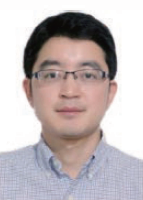Wanjian Yin*
1苏州大学
2上海期智研究院
EXTENDED ABSTRACT: We propose a machine learning approach for crystal structure prediction, in which a graph network (GN) is employed to establish a correlation model between the crystal structure and formation enthalpies at the given database, and an optimization algorithm (OA) is used to accelerate the search for crystal structure with lowest formation enthalpy [1]. The framework of the utilized approach (a database+ a GN model+ an optimization algorithm) is flexible. The comparative studies show that the GN model trained on Matbench (MatB) combined with Bayesian optimization (BO), i.e., GN(MatB)-BO, exhibits the best performance for predicting crystal structures of29 typical compounds with a computational cost three orders of magnitude less than that required for conventional approaches screening structures through density functional theory calculation.
REFERENCES
[l]G. Cheng, X.-G. Gong, W.-J. Yin*, Nat. Comm. 2022, 13, 1492.

尹万健, 苏州大学教授, 复旦大学学士 (2004)、 博士 (2009)。美国可再生能源国家实验室、 托莱多大学博士后和研究助理教授。国家高层次引进青年人才 (2015),爱思唯尔高被引学者 (2021, 物理学)。主持多项国家自然科学基金项目、 江苏省杰出青年科学基金, 参与多项国家重点研发计划项目。 主要从事计算物理与计算材料学研究, 在太阳能电池材料, 半导体缺陷物理, 高通械计算与机器学习设计新材料等方面做出了系列原创性工作。近五年来, 以(共同)通讯作者发表了包括 Nat. Comm.、]. Am. Chem. Soc.、 Chem、 Adv. Mater. 等在内的论文30篇。 论文被引超 10000次, 单篇引用超过 1000次的论文3篇。受邀在美国材料研究学会 (MRS)会议 (2014, 2015),国际半导体缺陷大会(ICDS 2019),国际半导体物理大会 (ICPS 2022),国际三元和多元化合物会议 (ICTMC 2022), 亚洲纳米科学和技术会议 (AsiaNano 2022)等国际会议上作邀请报告, 曾获中国材料研究学会计算材料学青年奖 (2021), 《 Computational Materials Science》期刊 Rising star提名奖 (2020), 《物理化学学报》高被引论文奖 (2020 )。